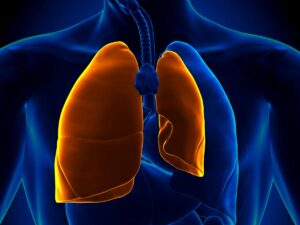Has anyone ever wondered about the potential drawbacks of hyperbaric oxygen therapy (HBOT), despite its notable benefits in promoting healing and recovery? The discussion around HBOT often highlights its positive effects, leaving many business owners unaware of possible side effects that could impact their operations and customers.
In this comprehensive guide, we will delve into nine potential side effects of hyperbaric oxygen therapy, providing a balanced view to empower informed decisions in your business. As someone deeply immersed in the hyperbaric therapy industry, I understand the importance of considering both sides of the coin.
Brace yourself for an insightful journey – let’s dive deep into the less-explored territory of HBOT side effects. Read on!
1. Fatigue or Dizziness
In the realm of hyperbaric oxygen therapy (HBOT), fatigue or dizziness can be common side effects. These reactions are typically due to the increased oxygen concentration the body receives during therapy. As oxygen levels return to normal post-treatment, the transition can lead to symptoms like fatigue and dizziness. Let’s have a detailed understanding of these symptoms:

Mechanism of Fatigue or Dizziness
Oxygen, while essential to life, can paradoxically lead to fatigue when delivered at high concentrations in the hyperbaric environment. This stems from its role in metabolism, wherein surplus oxygen can accelerate certain biochemical reactions, leading to increased production of byproducts like reactive oxygen species. As an expert in HBOT, the interplay between oxygen and our body’s complex systems never ceases to amaze me.
Customers Variability
Individual physiological factors can affect the response to HBOT. For example, some customers may exhibit heightened sensitivity to changes in oxygen levels, leading to a pronounced feeling of fatigue or dizziness. These responses may vary, as each individual’s physiological baseline and adaptive mechanisms to oxygen levels are unique. This calls for personalized care in administering HBOT.
Treatment Frequency
The frequency of HBOT sessions can influence the onset of fatigue or dizziness. Daily treatments may lead to cumulative effects of oxygen saturation, potentially exacerbating these side effects.
Mitigation Measures
Addressing fatigue or dizziness involves strategies both within and beyond the chamber. Adequate hydration and rest, for instance, can help the body better manage the effects of increased oxygen levels. Additionally, adjusting the rate of pressure change during treatment could also minimize these side effects.
Post-therapy Monitoring
Post-treatment observation is paramount in managing fatigue and dizziness after HBOT. Close monitoring can help detect any lingering side effects and enable timely intervention. This ensures customers safety and enhances the overall experience of HBOT. OxygenArk, being a dedicated manufacturer, understands this and emphasizes post-therapy monitoring in all its models to enhance customers safety.
2. Ear Barotrauma
Another potential side effect of HBOT is ear barotrauma. This condition is brought about by the failure to equalize pressure between the middle ear and the external environment during HBOT, leading to discomfort or pain. Understanding this issue will involve delving into five key areas of this side effect.

Mechanism of Ear Barotrauma
Ear barotrauma is fundamentally a pressure-related issue. The Eustachian tubes, which help equalize pressure, may sometimes struggle to adapt to the rapid changes during HBOT. If the pressure isn’t equalized adequately, it can lead to stress on the eardrums and middle ear structures, causing pain and discomfort.
Risk Factors
Certain individuals may be more susceptible to ear barotrauma. Those with a history of ear, nose, and throat disorders, such as chronic sinusitis or previous ear surgeries, are at higher risk. This underlines the importance of a thorough medical history review before initiating HBOT.
Preventive Measures
Prevention of ear barotrauma involves various techniques to facilitate pressure equalization. Some examples of these techniques are like Valsalva maneuver, where one gently blows against a closed airway, and can be useful. Such maneuvers can aid the opening of the Eustachian tubes, thus facilitating pressure equalization.
Interventional Measures
When preventive measures aren’t sufficient, certain interventions may be required. In some cases, placement of a pressure equalization tube in the ear drum may be necessary. Such procedures provide a direct means to equalize pressure, thereby mitigating the risk of barotrauma.
Potential Long-term Effects
While most cases of ear barotrauma resolve with appropriate management, potential long-term effects exist. Chronic barotrauma could potentially lead to hearing loss or tinnitus (ringing in the ears). As a seasoned professional in the field, I can affirm the significance of ear care in HBOT to prevent these potential outcomes.
3. Sinus Congestion
Sinus congestion is another potential side effect of HBOT, resulting from increased pressure and oxygen concentration. It’s generally transient and resolves after treatment. Here are five key aspects of sinus congestion linked to HBOT:

Mechanism of Sinus Congestion
Sinus congestion during HBOT is primarily due to pressure changes. As with the ears, rapid pressure changes can cause congestion and discomfort in the sinuses. Additionally, high oxygen levels can dry out the nasal passages, leading to congestion.
Customers Susceptibility
Those with a history of sinusitis or nasal allergies may experience a higher likelihood of congestion during HBOT. This again underscores the importance of understanding customers history prior to therapy. OxygenArk, in its role as a hyperbaric chamber manufacturer, incorporates these considerations in the design and functionality of its devices to ensure an optimal therapeutic experience.
Prevention Strategies
Preventive measures such as proper hydration and use of a humidifier can help manage sinus dryness and congestion. Also, slow, controlled pressure changes during the initiation and conclusion of therapy can help mitigate this side effect.
Interventional Measures
In some instances, pharmacological intervention may be necessary. Saline nasal sprays or certain medications can help reduce congestion and enhance customers comfort during HBOT. Seeing the relief on a person’s face after administering these simple interventions truly highlights their effectiveness.
Potential Complications
While generally not serious, persistent sinus congestion could potentially lead to sinusitis or other complications if not adequately managed. As someone deeply involved in HBOT, it is clear that while sinus congestion is not a severe side effect, proper management ensures the best outcomes for therapy recipients.
4. Changes in Vision
Changes in vision can be an occasional side effect of HBOT, usually temporary and often related to the increased pressure within the chamber. Given that vision is vital, any changes, even if transient, warrant understanding and attention. Here are the following key areas provide a comprehensive view of this side effect:

Mechanism of Vision Changes
HBOT can sometimes lead to refractive changes in the eye. The increased oxygen concentration affects the lens’s index of refraction, which might temporarily alter vision. Typically, this change is a slight myopic shift (nearsightedness), which resolves after cessation of therapy. It’s fascinating to realize that even the eyes aren’t immune to the influence of our atmospheric surroundings.
Risk Factors
Risk factors for vision changes include age, duration, and frequency of treatment. Customers over the age of 40 and those undergoing long-term or frequent HBOT sessions are more prone to experiencing vision changes. These factors underscore the necessity of careful customer monitoring.
Monitoring and Diagnosis
Vision changes are typically diagnosed through a comprehensive eye exam. Regular examinations are crucial, particularly for those individuals with a higher risk profile. These routine checks allow for early detection of any refractive changes and can help allay customers anxiety regarding their vision.
Prevention and Management
Unfortunately, there’s no surefire way to prevent vision changes during HBOT. However, reassurance that the changes are usually temporary and will reverse once treatment concludes can be comforting. In some cases, temporary corrective lenses might be considered until the completion of the treatment.
Long-Term Effects
In most cases, the vision changes resulting from HBOT are reversible and do not lead to long-term impact on vision. But it’s always imperative to monitor customers closely to ensure that normal vision is restored after completion of therapy. Throughout my experiences, effective customer communication has been paramount to alleviate concerns about vision changes.
5. Low Blood Sugar
While less common, HBOT can potentially contribute to episodes of low blood sugar, especially in customers with diabetes. Understanding the reasons for this, its management, and prevention is essential for safe practice. Let’s dissect this issue in these parts:

Mechanism of Low Blood Sugar
The increased oxygen concentration during HBOT can enhance insulin sensitivity, leading to an increased risk of hypoglycemia, particularly in insulin-dependent diabetics. It’s a less known side effect that needs further research, but knowledge about it can guide therapy management.
Risk Factors
Clearly, diabetic individuals are most at risk, especially those requiring insulin. Additionally, a person who is fasting or have not eaten adequately prior to their session may also be at risk. Recognizing these risk factors allows for individualized care plans.
Preventive Measures
Ensuring that diabetic customers monitor their blood sugar closely on therapy days is crucial. Additionally, having a balanced meal before therapy can help maintain blood sugar levels. Tailoring treatment schedules to match an individual’s needs can also be beneficial.
Management
In case of hypoglycemia, swift action is required. This may involve providing a quick source of sugar and adjusting insulin doses as necessary. Close monitoring and follow-up are also essential to prevent future episodes. The urgency of these situations always reminds me of the delicate balance our bodies maintain.
Potential Complications
Uncontrolled hypoglycemia can lead to a myriad of complications including dizziness, confusion, and in severe cases, loss of consciousness. Hence, constant vigilance and proactive management are key to preventing these serious complications. From my point of view, ensuring a safe environment for HBOT begins with understanding these potential issues.
6. Oxygen Toxicity
Oxygen toxicity, although rare, is a potential side effect of HBOT. It can affect the lungs or the central nervous system (CNS), presenting a range of symptoms. Below are five aspects that delve into the nature of oxygen toxicity:

Mechanism of Oxygen Toxicity
According to a study in NCBI, extended exposure to above-normal oxygen partial pressures, or shorter exposures to very high partial pressures, can cause oxidative damage to cell membranes leading to the collapse of the alveoli in the lungs. This leads to the production of reactive oxygen species, causing damage to cell structures, including the lungs and CNS. The symptoms can vary based on the area affected.
Symptoms and Diagnosis
Lung toxicity can present as coughing, chest pain, or shortness of breath. CNS toxicity, on the other hand, can cause symptoms such as twitching, seizures, dizziness, or vision changes. Diagnostic tools include examination and monitoring of oxygen exposure levels and durations.
Risk Factors
Factors such as the concentration of oxygen, length of exposure, and individual customers susceptibility play a role in oxygen toxicity risk. A history of lung disease or seizure disorders may also increase risk. Understanding these factors can guide safe HBOT practices. Remembering a case of oxygen toxicity, I can attest to the importance of these considerations.
Prevention and Management
Careful control of treatment parameters, like the oxygen concentration and duration of exposure, can prevent oxygen toxicity. If symptoms do occur, immediate reduction of oxygen concentration and cessation of therapy may be necessary. In some cases, medical management may be required.
| Aspect |
Prevention |
Management |
| Monitoring |
Regularly monitor patient’s vital signs and oxygen levels. |
Continuously monitor patient during HBOT |
| Oxygen Concentration |
Control and adjust oxygen concentration based on the patient’s condition. |
Reduce oxygen flow rate or discontinue HBOT if signs of toxicity develop. |
| Air Breaks |
Implement air breaks to allow for short periods of breathing room. |
Provide 100% oxygen via a mask or other means and remove the patient from the chamber. |
| Patient Education |
Educate patients on potential symptoms of oxygen toxicity and the importance of reporting any adverse reactions. |
Inform patients of possible side effects and encourage them to communicate any discomfort during the procedure. |
| Pre-screening |
Perform thorough medical pre-screening to assess patient suitability for HBOT. |
Identify and manage pre-existing conditions that may increase the risk of oxygen toxicity. |
| Staff Training |
Ensure HBOT staff are well-trained in recognizing and managing toxicity. |
Train staff to recognize signs of oxygen toxicity and respond promptly in case of emergencies. |
Long-term Effects
While often reversible, prolonged or recurrent oxygen toxicity can have lasting effects, potentially causing lung damage or recurrent seizures. Therefore, careful management and post-therapy follow-up are integral. As I have witnessed, ensuring treatment parameters stay within safe limits is vital to preventing oxygen toxicity.
7. Claustrophobia
The enclosed space of the hyperbaric chamber can trigger claustrophobia in some individuals. This psychological reaction is a unique side effect that requires particular attention and management strategies. Let’s explore this further:

Understanding Claustrophobia
Claustrophobia is an anxiety disorder triggered by enclosed spaces. According to Cleveland Clinic, 12.5% of the population has claustrophobia and 75% of people fear more than one object or situation. During HBOT, the confined environment of the chamber can potentially cause distress, fear, or panic in individuals susceptible to claustrophobia. It’s a subjective experience that varies in intensity from person to person.
Risk Factors
Any individual with a history of claustrophobia or anxiety disorders is at risk. First-time customers, unaware of their claustrophobic tendencies, might also experience this anxiety. Thorough pre-therapy counseling can help identify those at risk. A comforting word or a gentle assurance can make a world of difference in these situations.
Prevention Strategies
Strategies to prevent claustrophobia include acclimatizing the individual to the chamber environment before starting therapy. Techniques such as deep breathing exercises, mindfulness, or distraction strategies can also help manage anxiety. In some cases, anti-anxiety medication might be prescribed.
Management During Sessions
If an individual experiences claustrophobic symptoms during a session, immediate reassurance and application of anxiety management techniques are required. In extreme cases, cessation of the session might be necessary until the individual feels calm and ready to proceed.
Long-term Implications
While not a physical side effect, unresolved claustrophobia could potentially lead to treatment non-compliance. Therefore, it’s crucial to effectively manage these reactions to ensure that customers can successfully complete their treatment regimen. Seeing a person overcome their fear and complete therapy is a truly rewarding experience.
8. Pneumothorax
Pneumothorax, or collapsed lung, though extremely rare, is a potential serious side effect of HBOT. Given its severity, a thorough understanding is critical. Here are some key areas that provide insights into this side effect:

Mechanism of Pneumothorax
Pneumothorax can occur due to the rapid pressure changes during hyperbaric oxygen therapy. This might cause rupture of a weak area in the lung, leading to air leaking into the space between the lung and chest wall. This air pressure can cause the lung to collapse. In my practice, understanding this mechanism has been crucial to ensuring customers safety.
Risk Factors
Risk factors include a history of lung disease, especially conditions that cause structural weakness in the lungs, such as emphysema. Trauma to the chest or a previous pneumothorax also increases risk. For customers, having these risk factors requires thorough evaluation before HBOT.
Prevention
Preventing pneumothorax involves a thorough pre-assessment of customers, particularly those with lung diseases. The rate of pressure changes during therapy should be carefully controlled to minimize risk. Each customer should also be educated on reporting any unusual respiratory symptoms immediately.
Symptoms and Management
Pneumothorax typically presents with sudden chest pain and shortness of breath. If suspected, therapy should be halted immediately and emergency medical care sought. Treatment typically involves removing the excess air in the chest cavity, often through a chest tube.
Long-term Implications
A history of pneumothorax may limit the ability to safely undergo HBOT in the future. Careful follow-up and, in some cases, modification of HBOT parameters may be necessary. Therefore, understanding the potential risks is of utmost importance. This brings to mind a particular customer whose experience underscored the importance of these careful considerations.
9. Decompression Sickness
Decompression sickness is a rare but severe potential side effect of HBOT. Typically associated with deep-sea divers, it can occur with any rapid pressure change. Here’s a closer look at this phenomenon.

Understanding Decompression Sickness
Decompression sickness, also known as “the bends,” occurs when a person moves too quickly from a high-pressure environment to one of lower pressure. This sudden change can cause dissolved gases in the blood to form bubbles, leading to a range of symptoms.
Risk Factors
Factors such as rate of pressure changes and individual susceptibility play a role in decompression sickness risk. A history of decompression sickness or certain cardiovascular conditions might also increase risk. Understanding these factors can guide safe hyperbaric chamber oxygen therapy practices.
Symptoms and Diagnosis
Symptoms can range from mild, such as joint pains and skin rashes, to severe neurological symptoms, such as paralysis. Diagnosis typically involves a thorough clinical evaluation, and in some cases, imaging studies to assess any damage caused by gas bubbles. In my professional journey, ensuring accurate diagnosis has been a crucial step in providing effective care.
Prevention and Management
Preventing decompression sickness involves controlling the rate of pressure changes during therapy and ensuring adequate hydration. If symptoms do occur, recompression and oxygen therapy are typically used as treatment. In severe cases, other medical interventions may be necessary.
Long-term Effects
While often treatable, recurrent decompression sickness can have long-lasting effects on the nervous and musculoskeletal systems. Therefore, meticulous treatment planning and careful follow-up are essential. Maintaining the recommended pressure transition rates has been key in preventing decompression sickness.
Conclusion
Navigating the intricate landscape of hyperbaric oxygen therapy requires a comprehensive understanding of its potential side effects. From vision changes to decompression sickness, each facet underscores the vital importance of diligent customer care and monitoring. Every business owner understands the profound significance of ensuring the well-being of customers.
Education and awareness are the first steps towards fostering a safer therapeutic environment. For any product details, inquiries, or further questions about hyperbaric oxygen therapy, please contact us. Our team is ready and equipped to provide the needed assistance and guidance for everyone.









